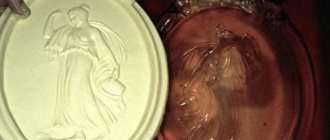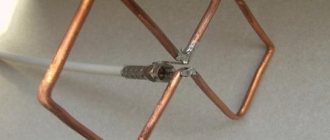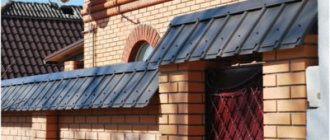All changes made to the design of the car must be tested for compliance with safety requirements. The procedure for making changes is defined in Decree of the Government of the Russian Federation No. 413, which is valid from July 1, 2022.
In the article we will look at:
- What is not considered a modification to the design of a car?
- What changes require official registration?
- How to register changes to a design
- What is a register of technical examination reports?
- List of regulatory documents
- What liability is provided for violations?
What is not considered a change to the design of a car?
A change in the design of a car is the installation or replacement of parts with spare parts not provided by the manufacturer.
For each car, the manufacturer prescribes technical documentation. It states:
- What spare parts can replace factory parts. When searching for a part by VIN, spare parts catalogs provide not only original components, but also replacements that the car manufacturer allows for installation.
- What additional components can be installed on the car. For example, the manufacturer may indicate in the vehicle manual that a towbar can be installed.
Any replacement of spare parts, components and assemblies that are specified in the manufacturer’s operational documentation does not constitute changes to the design. There is no need to coordinate such work.
Let’s say that the technical documentation for the Chevrolet Niva states that it is possible to install towing devices on the car. The manufacturer recommends purchasing original parts. If the part's passport indicates that it is intended for the Niva, it can be installed without additional approvals.
The part is intended specifically for the Chevrolet Niva; there is a corresponding mark in the passport. Installing this spare part on the Niva is not considered a change to the design.
If the owner puts a towbar on the car that is not intended for it, this is already considered a change in the design. For example, on the Niva from our example you cannot install a “self-welded” tow bar without additional permits. Before installation, the part must be tested and receive a safety certificate.
Which donors are suitable for reworking?
As mentioned above, almost any car can be converted into an electric car. But the simpler and easier it is, the better. Therefore, for such purposes, they usually choose simple cars with a minimum of electronics, and even better, old carburetor cars.
The fact is that the more modern the car, the more electronics are used, the more functions are tied to the car computer, right down to the alarm system, immobilizer and ignition control system. It will be more difficult to remake such a car. Therefore, it is better to choose simple and lightweight machines.
"Oka" for conversion into an electric car
The Oka can make a pretty good electric car, since it is a small, light and extremely simple car that will not be difficult to disassemble and reassemble. And the low weight in combination with small wheels does not require the installation of an overly powerful drive. Of course, the aerodynamics of this car leave much to be desired. But at low speeds (up to 90 km/h) this will not matter much.
In addition, the Oka has a fairly simple design, so there should be no problems replacing the internal combustion engine with an electric drive. And thanks to its light weight, the Oka electric car will have a good range (of course, for the most part this depends on the battery capacity and engine power, but weight also matters a lot) and acceleration dynamics.
Electric car from Lada (VAZ) 2107
“VAZ 2107” is not the best choice for modification from an aerodynamic point of view, but the car is light in weight. In addition, the “seven” has a soft suspension, so it is better not to use a battery that is too heavy. Otherwise, you will have to change the suspension springs to stiffer ones. Also, rear-wheel drive has disadvantages, among which is the increase in weight (rear-wheel drive gearbox and driveshaft).
Despite all the disadvantages of the model, it is quite easy to make an electric car from a VAZ 2107, since the car has a very simple structure. In addition, the Lada is a cheap car, and assembling and installing an electric power plant will not take much time and effort. The main thing is to choose the right motor and adapter for the gearbox.
Under the hood of the Lada there is quite a lot of space, which will make working with the car easier
Conversion of "VAZ 2102"
If we talk about Russian cars, then “VAZ 2102” and “VAZ 2104” will be one of the best options due to several features:
- lightweight body;
- simplicity;
- large trunk.
For the most part, almost all VAZ cars are similar to each other, especially when it comes to the “filling”. The differences between them mainly lie in the body type.
"VAZ 2102" and 2104 are station wagons. The peculiarity of their body is that the car has a huge trunk, which gives room for creativity. Thanks to this, when assembling an electric car “VAZ 2102” or 2104, you can place a capacious battery in it and increase the power reserve.
In addition, the suspension uses stiffer springs, so the car can be loaded more heavily and the weight distributed correctly. Under the hood, all VAZ models from 2101 to 2107 have almost the same power plant.
Conversion from ZAZ 965
You can probably make an electric car out of a Zaporozhets just for the sake of interest, since the car is hopelessly outdated in every sense. Its advantage is its light weight, but at the same time the body has very small dimensions, which causes the problem of placing the battery.
It is also worth taking into account design features, in particular, the rear location of the engine and the air cooling system, which negatively affects aerodynamic performance.
But nevertheless, the ZAZ 968 will make a pretty good electric car. Especially as a trial attempt, since the cost of the car is minimal, and the power plant will require a simple electric motor. 12 kW of power is quite enough.
Conversion of "Tavria" into an electric car
“Tavria” is the best option among domestic cars for conversion into an electric car. Its advantages include:
- Low weight – 745-790 kg depending on body type.
- Simplicity of design.
- Small wheels (13 inches).
- Large trunk - if we talk about hatchbacks and cargo versions.
It’s worth clarifying right away that Tavrias are produced in different bodies:
- liftback "Slavuta";
- pickup – “ZAZ 11055”;
- station wagon - “Dana”.
Of course, this model cannot be called a truck, but a rather large “booth” is used as a trunk. At the same time, the car is unpretentious in operation and extremely simple to repair. And you can buy it at a low price, especially used. Thanks to this, it is very easy to make an electric car out of a Tavria, and an expensive and powerful drive is not required as a power plant.
Electric Moskvich
Speaking about Muscovites, you should immediately understand that model 2141 is most suitable for conversion. The fact is that earlier models have a very large weight with a relatively small body. And only starting with model 2141, the car has good aerodynamics (by the standards of Soviet cars) and a large trunk. At the same time, the design of the car assumes that the bulk of the mass should be located in the front. Although some batteries can be placed in the luggage compartment.
Under the hood, the car has quite a lot of free space, as well as a minimum of electronics, which also gives room for creativity. Thanks to this, making a Moskvich electric car is quite simple.
But the body, combined with the huge gearbox, is quite heavy, which means that this option will require a fairly powerful power plant. And ideally, you will have to replace the gearbox with a lighter and simpler one.
Conversion of the Volga to electric traction
"Volga" is the largest and heaviest Russian-made car. Therefore, it will require a fairly powerful power plant (minimum 50-60 kW). And such a drive will require a capacious battery.
And if in the case of the VAZ the lion's share of the mass is the engine, then in the Volga most of the weight is the huge frame and body. Even removing the engine won't do much to reduce weight.
However, the Volga electric car also has its advantages: a spacious trunk, good weight distribution, and if we talk about newer models, starting with 3110, we get good aerodynamics (again, in comparison with Russian cars of that time).
Which changes require verification and paperwork, and which do not?
Appendix 9 of the Technical Regulations of the Customs Union lists the typical, most common changes to the design:
- Everything related to the equipment or retrofitting of trucks: changing the type of body, installing additional fuel tanks, installing winches and hydraulic lifts, etc.
- Installation of gas equipment.
- Replacing headlights with changing the class of the light source. For example, replacing halogen headlights with xenon ones.
- Re-equipment of cars to enable disabled people to drive them.
- Conversion of a car into an ambulance.
All these changes must be checked for compliance with safety requirements and notes on the conversion must be included in the documents.
In addition to the above, a change in design is considered to be the installation of parts not provided by the manufacturer that affect driving safety. For example:
- replacing the engine with an engine with different characteristics,
- making changes to the brake system,
- suspension lift or lowering,
- off-road tuning: installation of non-standard power bumpers, winches, off-road wheels.
Such changes are also subject to mandatory verification and registration.
Using examples, we will analyze the nuances of two popular changes to the design:
Converting a car to gas
You can switch your car to gas if experts and the traffic police conclude that this is acceptable for your car.
When switching to gas, you need to pay attention to the location of the filling fitting. For propane, it is recommended to install it on the gas filler door, bumper, or under the bumper. Cannot be installed under the hood or in the trunk. When converting to methane, you can install a fitting under the hood, but only on the side opposite the battery.
You must contact certified centers for translation. The service station must install and issue a declaration from the manufacturer of the installation of equipment for supplying the engine with gaseous fuel to the vehicle.
SUV tuning
According to the general rules, tuning can be done if the traffic police issues permission for it. In practice, most changes are prohibited.
- “Power bumper” - you can install it, but registration is required. And only a part that has a certificate of conformity will do.
- “Kenguryatniki” (metal arcs on which additional lighting equipment is attached) - there is no direct ban on them, but the Technical Regulations of the Customs Union prohibit the installation of steel parts that protrude forward relative to the bumper line. So in practice, the traffic police almost always prohibits conversion.
- Winches can be installed, but must be registered. The winch can go beyond the bumper only if it is covered with a protective element with a radius of curvature of less than 2.5 mm
- Kungs for pickup trucks (lids that cover the body) can be installed and do not even need to be registered if the lid is removable. But it can only be welded to the body with permission from the traffic police.
- Wheels with a large diameter can be installed without approval, but there are limits. The limits are set by the manufacturer - for example, for some UAZ vehicles up to 8 types of wheels are allowed, but only 3 types can be installed on the Land Cruiser 200. If the wheel is larger or smaller than the dimensions allowed by the manufacturer, you must undergo a safety check. During installation, the speedometer will need to be calibrated so that it shows the actual speed of the car.
Check the organization's fines
Who does all this bother?
And tell me, who has all this bothered so much that now almost any alterations or modifications and installation of accessories in cars is actually prohibited? Well, simply because you have to be a real fan in order to improve something under such conditions. But this, as can be seen from the example of the USA, is a whole industry with very decent sales, turnover, jobs and tax payments. This is where the philosophy post ends, because the question is essentially rhetorical.
In the photo below is my wife’s car, which appeared much later than my G8.
A. Gruzdev
There was no tuning in the literal sense (although we changed the taillights to more fashionable ones), but it was all in angels and airbrushing, which we probably did for about a year or even more. It was a good time for the car business, I even dreamed of opening my own car service, of course, not a simple one, but specifically to “tune cars.”
How to register changes to a design
Receive a preliminary technical examination report
This must be an organization that is included in the unified register of conformity assessment bodies of the Eurasian Economic Union.
You need to describe how you want to convert the car and bring the car for diagnostics. The commission will issue a preliminary conclusion on whether changes can be made to its design.
On average, an examination costs 3,500-8,000 rubles.
The conclusion is issued only for certain changes. If the driver has been approved to switch the car to gas, he will not be able to change the headlights at the same time. This will require a separate permit.
Obtain permission from the traffic police to make changes to the design
An application for changes to the design can be submitted through State Services. It's free.
The application must be accompanied by:
- a copy of the driver's passport;
- conclusion of the preliminary examination.
The traffic police will check the documents and history of the car. If a registration ban is imposed on the car, it will not be possible to formalize changes to the design.
Make the necessary changes
You can re-equip the car yourself, the main thing is to keep the certificates of conformity for each part.
Receive a vehicle safety inspection protocol
At this stage, you must contact the testing laboratory again. There they will evaluate the results of the changes and issue a safety inspection report for the car’s design. Without a protocol, it will not be possible to make changes to the PTS.
Pass inspection
The procedure is the same as for regular maintenance. Additionally you need to take with you:
- permission to make changes to the design from the traffic police;
- design safety inspection report issued by the testing laboratory.
Typically, a technical inspection costs from 500 to 1,500 rubles.
On the back of the diagnostic card it will be written down what changes have been made to the design of the car.
Obtain a SKTS certificate from the traffic police
SKTS is a certificate of compliance of a vehicle with changes made to its design with safety requirements. You can obtain it from the technical supervision department of the traffic police. You will need to bring:
- declaration of the work manufacturer,
- security check protocol,
- diagnostic card,
- permission for refurbishment.
The car must be brought in for inspection. Also, before visiting the traffic police, you need to pay a state fee - 800 rubles.
Make changes to PTS and STS
Within 10 days after receiving the SKTS, you must go through the vehicle registration procedure to make changes to the vehicle data. You need to bring:
- safety compliance certificate,
- PTS,
- STS
- OSAGO.
The traffic police will enter information about the conversion to STS and PTS. The state fee for replacing documents is 850 rubles.
Checking fines for legal entities
Try for free
Rework cost
The lion's share of the cost of converting cars into electric cars will be the battery. However, if you use a gasoline generator, you can save on the battery, since the internal combustion engine in this case will constantly power the electric power plant.
As mentioned above, it will not be possible to completely abandon liquid fuel, but this option will still significantly reduce consumption.
Additionally, the cost of the conversion will depend on which kit you choose. And the cost of the set depends on:
- electric motor power;
- quality of components (including the control unit);
- battery capacity (if included).
The price will also have to include the purchase of an adapter from the engine to the gearbox. It is not possible to name a specific price because there are too many variables. However, we can name the cost of the “Tesla KIT” kit – $12,000.
The advantage of such a kit is that the kit includes all the necessary parts, except for the gearbox adapter. At the same time, the power reserve, according to the manufacturer, is about 200 km (depending on the weight, aerodynamics and other parameters of the car).
To save money, we make an electric car from Chinese kits, which can be ordered for about $1,500. But here, too, much depends on power and other factors. And this price does not include batteries, which also needs to be taken into account.
Which documents to refer to?
| Document title and link | What regulates |
| Decree of the Government of the Russian Federation dated 04/06/2019 N 413 (as amended on 04/28/2020) “On approval of the Rules for making changes to the design of wheeled vehicles in operation and subsequent verification of compliance with the requirements of the technical regulations of the Customs Union “On the safety of wheeled vehicles” | Establishes a general procedure for making changes to the design |
| Code of Administrative Offenses of the Russian Federation Article 12.5 Driving a vehicle in the presence of malfunctions or conditions under which the operation of vehicles is prohibited, or a vehicle on which the identification sign “Disabled” is illegally installed | Fines have been prescribed for driving a car with illegal modifications to its design. |
| Order of the Ministry of Internal Affairs of Russia of September 10, 2022 No. 612 “On approval of the Administrative Regulations of the Ministry of Internal Affairs of the Russian Federation for the provision of public services for issuing permission to make changes to the design of a wheeled vehicle in operation” | It is spelled out how the state service for issuing permission to make changes to the design of a wheeled vehicle in operation is provided |
| Order of the Ministry of Internal Affairs of Russia of September 10, 2022 No. 613 “On approval of the Administrative Regulations of the Ministry of Internal Affairs of the Russian Federation for the provision of public services for issuing a certificate of compliance of a vehicle with changes made to its design with safety requirements” | The procedure for issuing a certificate of compliance of a vehicle with changes made to its design with safety requirements is prescribed |
| Decision of the Customs Union Commission dated 09.12.2011 N 877 “On the adoption of the technical regulations of the Customs Union “On the safety of wheeled vehicles” | The document states which changes to the design cannot be made and which can be made. |
Checking fines for legal entities
Do you want to monitor fines, receive a daily report on new fines found and pay them?
Try for free
What are electric cars and what are they like?
An electric car is a vehicle that is driven by an electric motor.
Essentially, this is the same traditional car, but instead of an internal combustion engine, it uses an electric powertrain. And instead of liquid fuel (gasoline or diesel fuel), the power source is a battery. The essence of all cars is the same - transporting passengers or cargo. Therefore, it will not be difficult to make an electric car from a regular car. However, there are different types of electric cars:
- civilian cars - ordinary cars (sedans, hatchbacks, coupes, SUVs, and so on);
- low-speed - golf carts, electric forklifts and other vehicles whose speed does not exceed 30-40 km/h;
- public transport;
- specialized vehicles (VVs) - ambulances, firefighters, emergency services and cars, equipped with additional equipment to perform special tasks;
- trucks.
Of course, each of these types of vehicles is equipped with appropriate power plants and additional equipment. In addition, there are hybrid cars in which the drive is an electric motor, but a gasoline engine is installed to charge the batteries. Electric vehicles can also use different types of motors.
What liability is provided for violations?
Fine for illegal changes to the design - 500 rubles
(Article 12.5 of the Code of Administrative Offenses of the Russian Federation).
If the inspector discovers that there are illegal changes in the design of the car, he will issue a requirement to eliminate them or register them. Information about this will be stored in the traffic police database. The driver must comply with the requirement within 10 days, otherwise the registration of the car will be stopped.
Don't miss new useful publications
We will tell you about the intricacies of the legislation, help you understand it and tell you what to do in controversial situations.
Features of automotive wiring
Replacement is simple; it’s more difficult to find the location of a break or short circuit with your own hands, especially if you don’t know how to do it.
In this article we will try to answer many questions, including:
What's under the hood
In the engine compartment there are many wires that perform a wide variety of functions:
What's in the cabin
Inside the car, intended for the driver and his passengers, there are even more wires, since there are:
Note! Wiring harnesses run through the interior to the rear of the car. Therefore, there is a maximum concentration of electrical wiring inside the machine.
Steering wheel upgrade
A conventional steering wheel with a thin body is hardly comfortable or attractive. Also, very few drivers will like the steering wheel with linings and bumps covered with perforated eco-leather.
Upgrading the steering wheel on Lada Vesta on your own
And for safety reasons, the steering wheel should be equipped with an airbag, which will protect the driver in a critical situation.
Matrix technology allows you to radically transform the steering wheel according to your preferences. If this method seems too complicated for you, then consider completely replacing this structural element. It is more expensive, but the result is 100% guaranteed.
Optional equipment
During operation, car owners often install additional electrical equipment:
- Alarm;
- More powerful lighting fixtures;
- Audio and video equipment, etc.
Integrating them adds wiring to the vehicle and also puts stress on the electrical system. Moreover, a number of “new” electricity consumers cannot be switched off, for example, alarm systems, which means that the likelihood of rapid battery discharge becomes very important.
Current leakage is also determined using a multimeter
If your car begins to have difficulty starting after a long period of parking, then you should determine the cause of the current leak. A multifunctional device switched to ammeter mode will also help you find a leak.
Tip: Don’t forget to set the measurement range to 10 Amps, since the current in the car’s on-board network is constant.
Equipment options
Before installing a manual control system on your car, you need to determine a suitable design. They are divided into several categories.
- One hand. The systems are aimed at people who have one arm missing or non-functional. The main task here is the ability to change gears and control with one hand. To do this, a belt is attached to the leg, which is responsible for changing gears. Additional levers are placed on the dashboard or near the steering wheel.
- Under two hands. The peculiarity of the system is the ability to completely control the vehicle without using your legs. All manipulations are performed manually. The brake pedal is controlled manually through a bracket. The rods and levers are connected using hinges.
The choice depends on the physical health and condition of the disabled person.
Tinted glass
Beginning creators really like to start with glazing and optics. Tinting these elements can be considered the most affordable and simplest (in terms of execution) way to transform a vehicle.
High-quality tinting is guaranteed to increase the attractiveness of the car. It will also protect the interior from fading and excess sunlight. However, in this matter a sense of proportion is necessary.
An example of full car window tinting that is prohibited by law
We also note the fact that tinted windows can improve the heat and/or sound insulation of the interior space, which will come in very handy for fans of air conditioning, because a layer of tinted film will reduce the heat transfer of the glass, slowing down the heating of the air in the cabin.
A huge advantage for every car is factory-type window tinting. Therefore, if you need an ideal result, tinting should be done in a specialized technical center, since the lack of experience and/or professional tools can cause very disastrous consequences. Entrust this task to the masters, and the result of the specialists’ work will definitely please you.
Pros and cons of twisting wires in a car
The easiest way to connect the wires is by twisting them. It's quick and doesn't require any tools other than a knife to strip the insulation layer. If necessary, twisted contacts are very easily broken without any tools.
The disadvantage of twisting is low reliability, as well as possible contact failure. This method increases the risk of oxidation, which can lead to unstable operation of the powered consumer.
Twisting in automotive electrics is not recommended for use in high current circuits. For example, to power headlights or connect fog lights. But it is quite suitable for low-current circuits. LED lighting may well consist of twisted connections.
A reliable twist is made by intertwining the fluffy ends into one whole. This ensures good contact between the two conductors.
What's under the hood
Under the hood you can see many wires of different types, quite a lot, and they all perform different functions:
- The wires transmit high voltage pulses, they come from the battery (or generator) to the engine cylinders.
- They send data from sensors so that the driver can know how his car is working.
- The fuel supply system works thanks to high-quality wiring, as well as all lighting fixtures: headlights, brake lights, turn signals.
Preparation before painting
The preparatory stage begins with choosing a place for painting: the garage or outdoor area must be cleared of excess rubbish, the floor must be washed with a hose, and the walls must be covered with film (if painting indoors).
The wheels of the car must be removed or protected with paper (film), since the rubber is not intended for painting and subsequently it is not possible to erase traces of the aerosol composition.
- The car body or part is thoroughly washed under high pressure and dried. Parts of the car that are not planned to be painted are wrapped with masking tape and protective film.
- The elements are treated with a degreaser (it is not advisable to use gasoline and solvent), scratches on the body are either treated with special filling solutions, or cleaned and covered with putty and primer.
- Primed elements are sanded using sandpaper or sanding discs, achieving a smooth transition between the old paint and the areas being restored. The shavings must be removed with a damp cloth, the treated surfaces should be treated with a degreaser and the body should be allowed to dry.
When purchasing paint for a certain body element, you need to evaluate how the aerosol looks on the metal in order to accurately match the color of the car. To select paint, it is recommended to contact experts.
Computer paint selection is quite popular. The technology selects shades much more efficiently than the human eye. It would be a good idea to correlate the number of the aerosol paint with the factory paint of the car (indicated on the body plate).
Spray cans of car paint are easy to buy in online stores and large car accessories stores.
However, color selection through online ordering is critically difficult (the screen of PCs and smartphones can distort the color of the spray paint). It is much more logical to come to a large store and match the color of the aerosol with the color of the car.
Stage 4. Obtaining a design safety inspection protocol
At this stage, you need to once again contact the authorized organization (testing laboratory) to obtain a protocol for checking the safety of the vehicle design.
The protocol must contain the following information:
- data of the authorized organization;
- date of registration and number;
- vehicle data;
- confirmation of mandatory certification or declaration of conformity for installed equipment;
- confirmation of compliance with the requirements of Appendix No. 9 to the CU TR “On the safety of wheeled vehicles”;
- when installing LPG, confirm the availability of passports for each cylinder;
- results of verification of design changes;
- conclusion that the safety of the vehicle complies with legal requirements.
Protocol description











